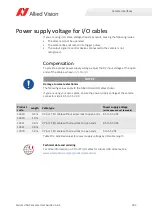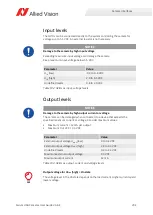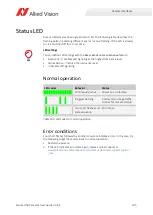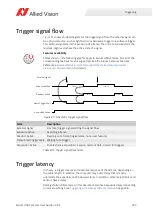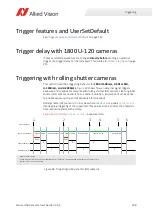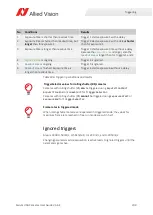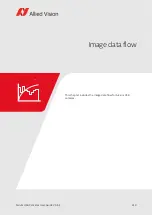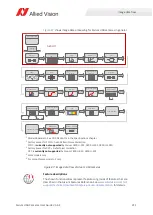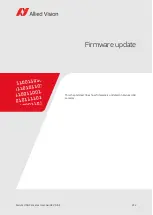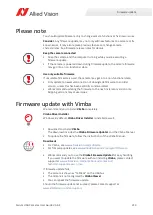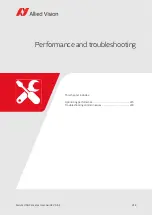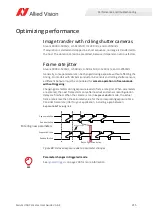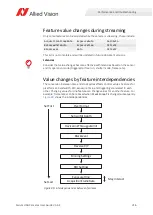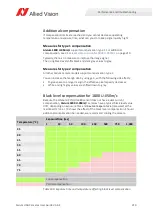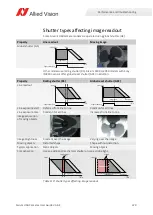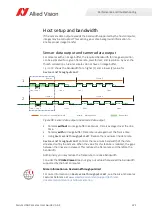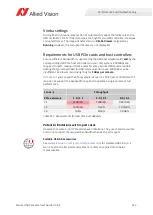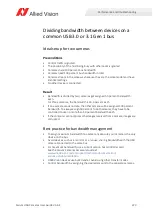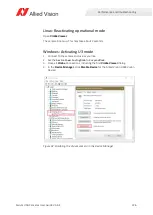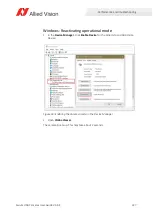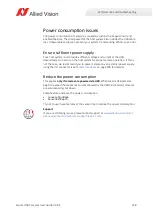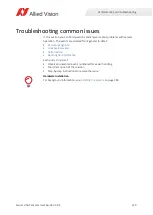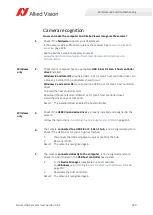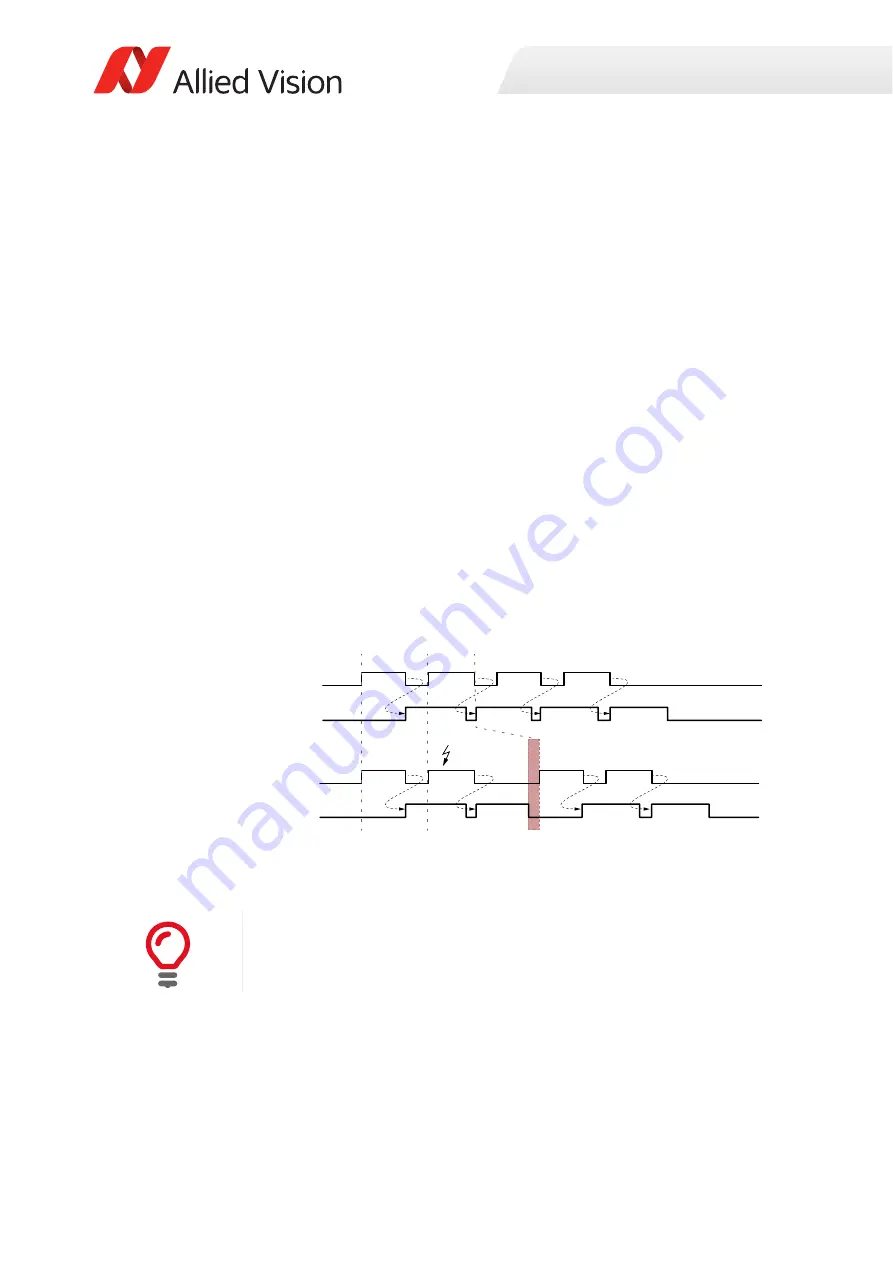
215
Alvium USB Cameras User Guide V3.6.4
Performance and troubleshooting
Optimizing performance
Image transfer with rolling shutter cameras
Alvium 1800 U-500m/c, U-501m NIR, U-1240 m/c, and U-2050m/c
If acquisition is started and stopped in a short sequence, no image is transferred to
the host. The duration cannot be predicted, because it depends on various factors.
Frame rate jitter
Alvium 1800 U-120m/c, U-500m/c, U-501m NIR, U-1240 m/c, and U-2050m/c
Generally, some parameters can be changed during exposure without affecting the
timing. For models with ON Semiconductor AR sensors and rolling shutter sensors,
a different behavior must be considered for
camera operation in freerun mode
without triggering
:
Changing parameters during exposure leads to frame rate jitter. When parameters
are entered, the next frame starts only after readout and sensor reconfiguration
delay are finished. When the camera is run in
ExposureAuto
mode, the actual
frame rate is less than the calculated value for the corresponding exposure time.
Consider frame rate jitter for your application, including a gap between
ExposureActive
signals.
Figure 88: Delayed exposure due to parameter changes
Parameter changes in triggered mode
on page 209 for more information.
džƉŽƐƵƌĞĐƟǀĞ
ZĞĂĚŽƵƚĐƟǀĞ
džƉŽƐƵƌĞĐƟǀĞ
New parameters
ZĞĐŽŶĮŐƵƌĂƟŽŶĚĞůĂLJ
ŶƚĞƌŝŶŐŶĞǁƉĂƌĂŵĞƚĞƌƐ͗
ZĞĂĚŽƵƚĐƟǀĞ


